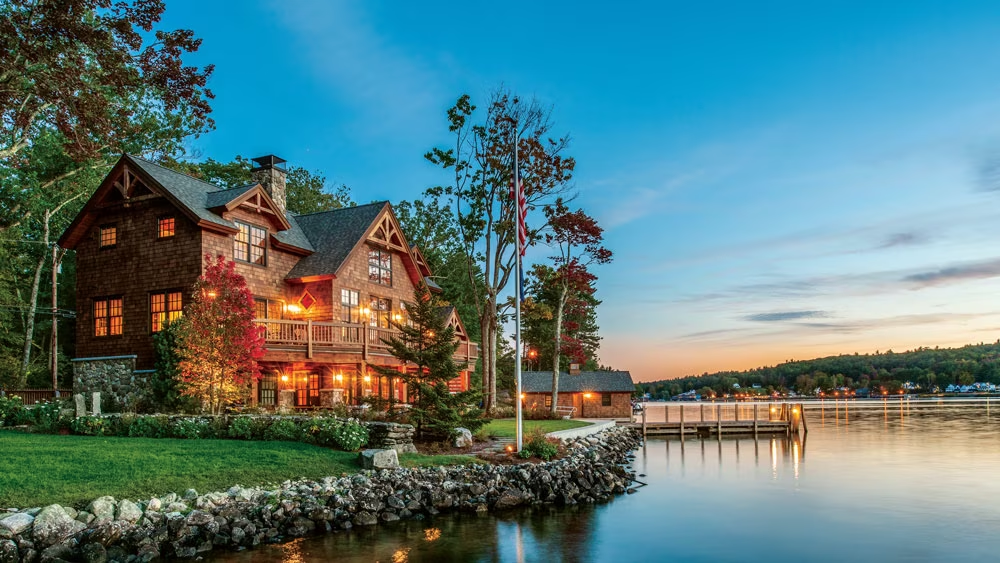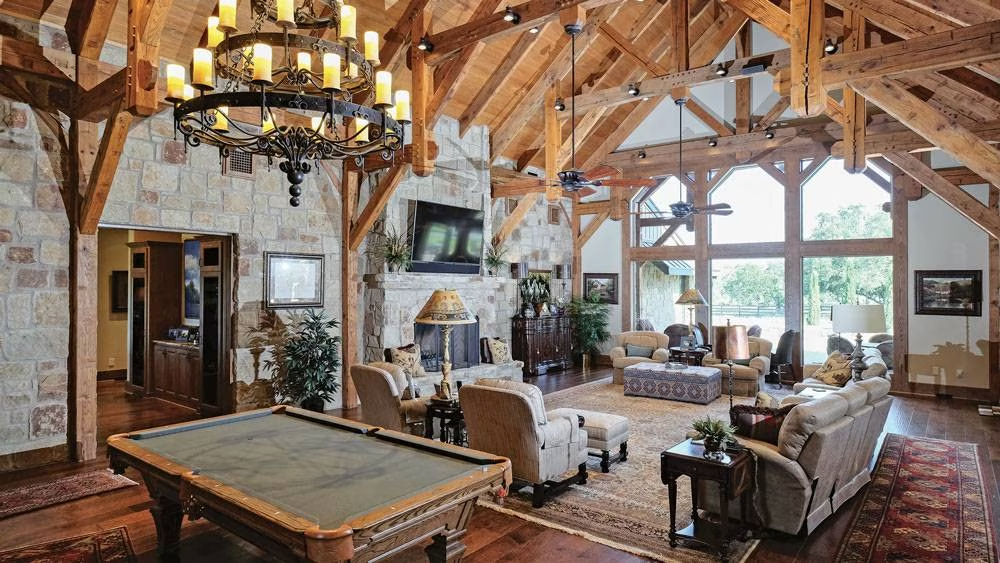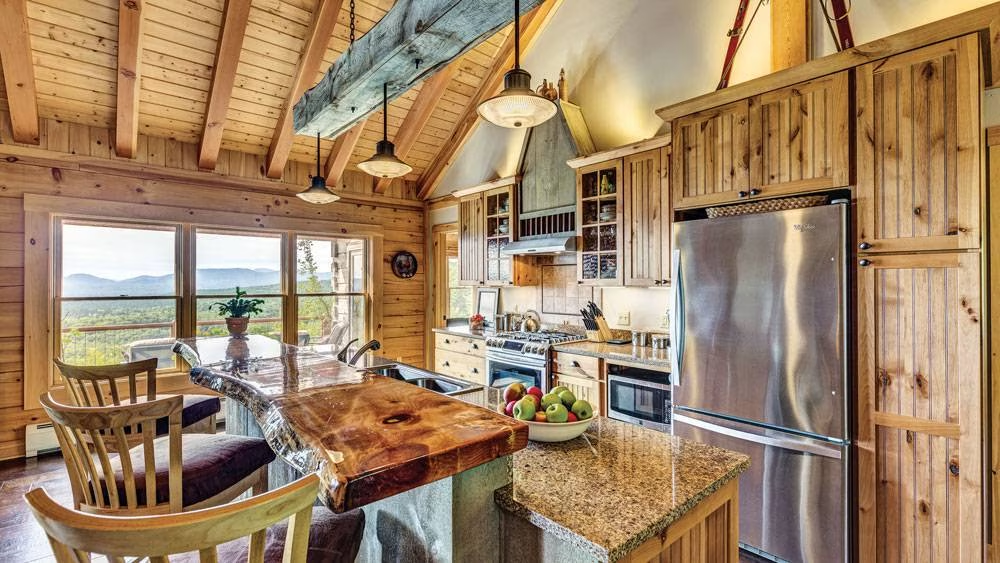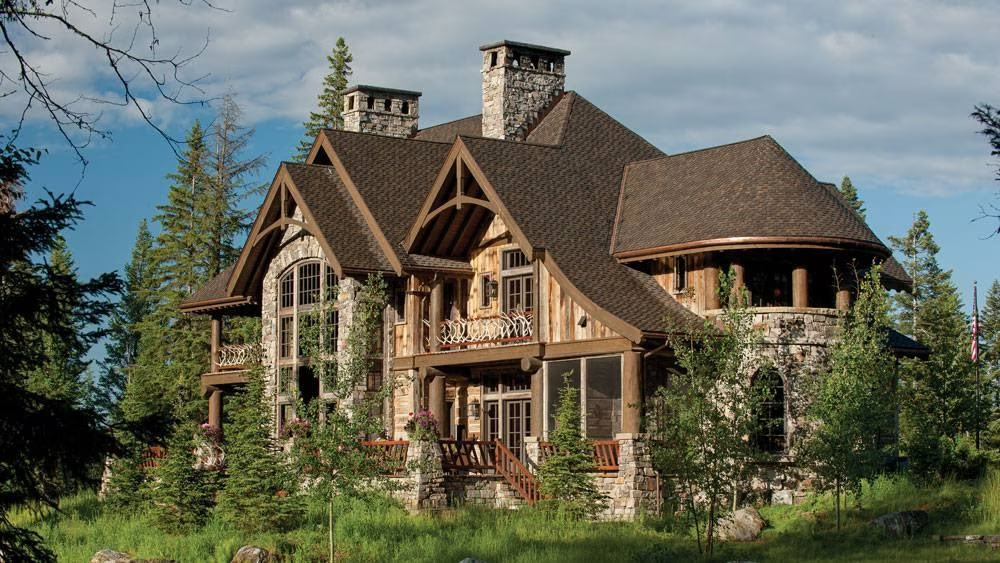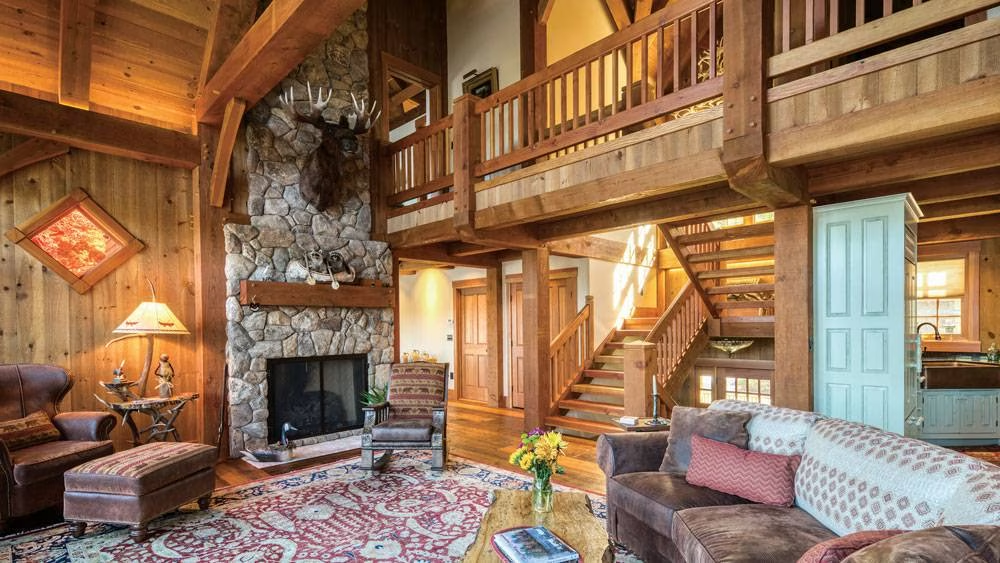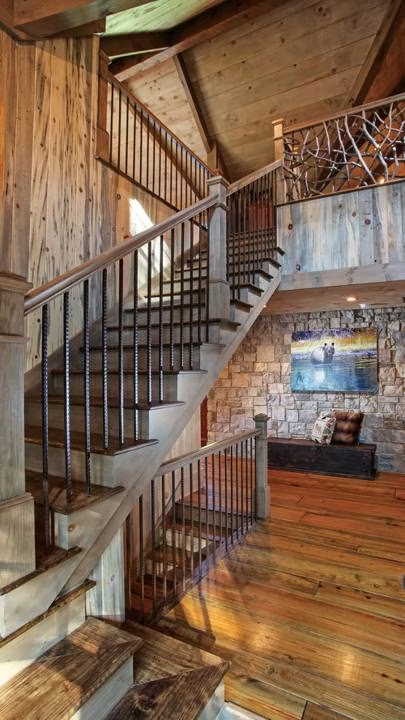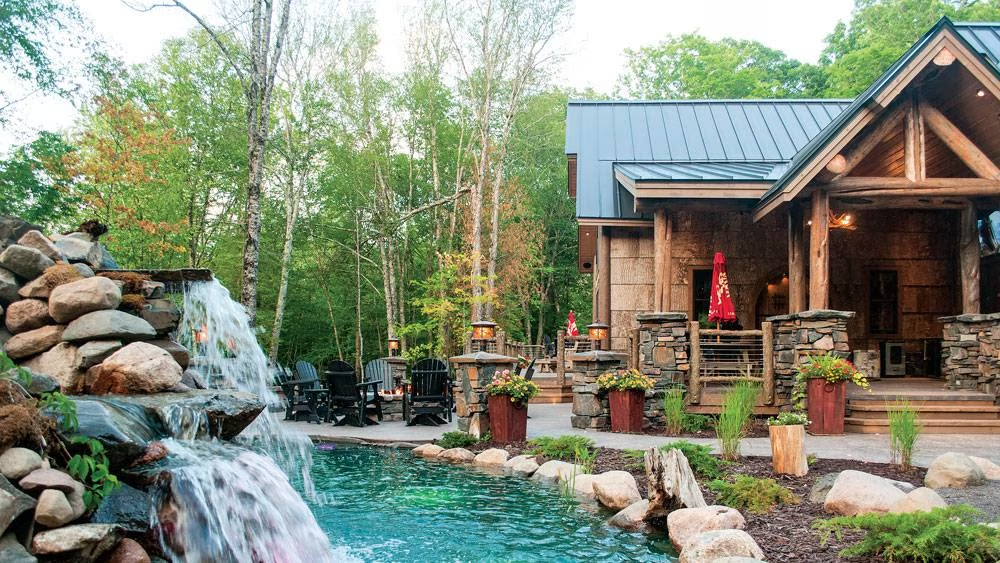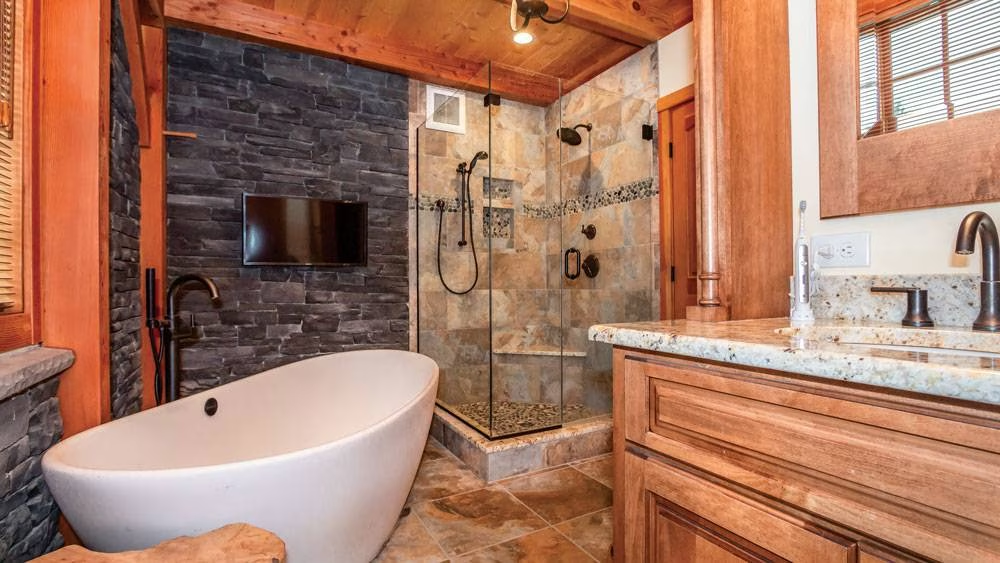When setting out on the journey to design and build their forever home, couples may have to compromise on how much wood is the right amount of wood.
Enter hybrid log and timber construction. The hybrid approach involves the blending of two or more building systems to construct a building.
“All wood, all the time is an acquired taste, and it may not be for everyone,” says Remington Brown, designer at DC Structures in Damascus, Oregon. “But being able to mix drywall, tongue-and-groove, Hardie board, tile and stone with dramatic wood timbers is a look that also allows for creative flexibility. It’s becoming an increasingly popular choice.”
Hybrid homes have a host of other advantages as well. Consider these five points as you’re developing your own dream home plans.
Flexible Budget
“Choosing a hybrid can be substantially less expensive,” Remington says, “or it can free up room in the budget for things like better-insulated windows or high-end appliances and fixtures.”
Light & Airy Design
Wood absorbs light, so choosing a mix of interior finishes, as well as copious windows, creates a bright and airy new home, according to Matt Franklin, lead architect at Meridian, Idaho-based PrecisionCraft Log & Timber Homes.
Increased Energy Efficiency
Companies that specialize in hybrid homes often specify building materials that will foster high-performance. This includes structural insulated panels (SIPs) for exterior walls and roofs. Likewise, manufacturers recommend insulated concrete forms (ICFs) for the foundation/basement, to make that space warm and inviting.
Freedom of Choice
Choosing a hybrid home gives buyers more freedom, both in the design of the home and the budget, advises Diana Allen, director of design at Woodhouse: The Timber Frame Company, headquartered in Mansfield, Pennsylvania.
“I think the most important thing is to identify the spaces that will be frequently used. You want to spend your dollars on the highly visible areas, like your kitchen, dining area and living room, along with the primary bedroom,” Diana says.
Using timbers in the public areas, then transitioning to prefabricated roof trusses and flat ceilings for the other spaces can save money.
“We use this approach frequently to help maintain a tight budget,” Diana says.
Conflict Resolution
By blending different building materials, a couple can create a new home that’s unique. The process of compromise can help reduce conflict. “I so rarely come across couples who are dead set on having the same style,” Remington admits. “Designing and building a hybrid home allows many more opportunities for compromise and complementing styles.”




